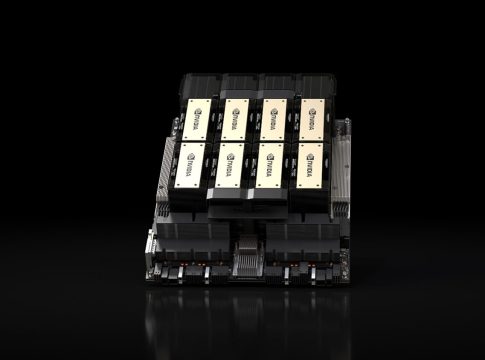Nvidia’s Shift: Entering a New Era with the Blackwell B30 Chip
Nvidia has found itself at a pivotal crossroads following the U.S. government’s export ban on its advanced H20 chips to China. In a strategic pivot, the tech giant is reportedly developing a new AI accelerator known as the B30, which is built on the Blackwell architecture. This latest venture signals not only a response to regulatory pressures but also a commitment to enhancing multi-GPU scaling capabilities for demanding AI applications.
A Closer Look at the B30 Design
The B30, which has undergone various name iterations—from the RTX Pro 6000D to the B40—is part of a wider family of chips designated as BXX. Although the precise specifications are still under wraps, emerging reports suggest that the B30 will leverage GDDR7 memory and utilize GB20X silicon, the same technology found in consumer RTX 50 GPUs.
Perhaps most intriguing is the promise of multiple GPU interoperability. This feature could significantly improve computational efficiency—a critical aspect for AI workloads. While speculation surrounds whether this function will use NVLink (a high-speed interconnect technology), Nvidia has not included NVLink in its consumer-grade chipsets in recent generations, which adds to the uncertainty around the B30’s integration capabilities.
Implications of the Export Ban
The backdrop of Nvidia’s strategic shift is the U.S. government’s concerns regarding the memory and interconnect bandwidth of the H20 chips, which were deemed too advanced for unrestricted export. The rationale? These powerful AI accelerators could be repurposed to bolster supercomputing initiatives in China, potentially for military use. This regulatory environment highlights the ongoing tension within the tech industry as companies like Nvidia navigate complex geopolitical landscapes while striving to maintain their innovative edge.
Nvidia’s CEO, Jensen Huang, has openly criticized these export policies, labeling them a "failure." He warns that such restrictions may inadvertently allow Chinese firms to leapfrog in innovation, possibly reshaping global technology standards. The stakes are high—not just for Nvidia but also for competitors like AMD, which recently reported potential losses of approximately $800 million due to similar bans.
The Future of AI Hardware
As Nvidia unveils its new Blackwell servers designed to efficiently connect multiple GPUs, the promise of improved performance will be paramount. With configurations capable of linking up to eight RTX Pro 6000 GPUs, the potential applications of this technology could redefine the capabilities of AI systems, especially in enterprise and research settings.
In conclusion, the B30 represents more than just a new product launch; it is a reflection of Nvidia’s agile response to regulatory challenges and a strategic roadmap for the future of AI hardware. As the tech landscape evolves, AI innovation will undoubtedly continue to provoke discussions around ethics, competitiveness, and the role of global policies.
For those interested in keeping tabs on Nvidia’s developments and the broader implications for the AI industry, be sure to follow updates from reputable technology news platforms. Stay informed, as these transformations promise to shape the future of artificial intelligence.

Writes about personal finance, side hustles, gadgets, and tech innovation.
Bio: Priya specializes in making complex financial and tech topics easy to digest, with experience in fintech and consumer reviews.

